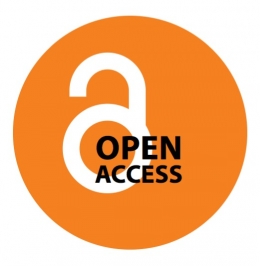 When embarking on a long journey, arriving at the half-way point of the trip has, more than anything, a deep psychological impact – it is a significant milestone on the way; we feel inside that from this moment we are now not “on the way” but rather “we are arriving”.
When embarking on a long journey, arriving at the half-way point of the trip has, more than anything, a deep psychological impact – it is a significant milestone on the way; we feel inside that from this moment we are now not “on the way” but rather “we are arriving”.
During the 1990’s, a movement began in various prestigious universities worldwide to make their publications freely available as a way of democratizing the results of research. In 1998, SciELO emerged as a pioneering pilot project in this area with only 10 journals at its disposal with none of them coming from “the first world ” (Packer, 2009). This took place a number of years before the Open Society’s famous Budapest Declaration, the Berlin conferences and other initiatives in this regard. Ten journals seemed like nothing, when commercial journal publishers produce many thousands of subscription based journals.
Fifteen years have passed since then and it is logical to ask how far we have come along the road. The question we have is: “Are we still on the way or have we begun to reach our destination“?
 In a recent publication produced by Éric Archambault of the company Science-Metrix, with the sponsorship of the European Commission1, we are told that in April 2013, 50% of academic articles published worldwide between 2004 and 2011 are available via open access.
In a recent publication produced by Éric Archambault of the company Science-Metrix, with the sponsorship of the European Commission1, we are told that in April 2013, 50% of academic articles published worldwide between 2004 and 2011 are available via open access.
 This figure has been called into question by other researchers in this field, such as Fred Dylla, the Director of the American Institute of Physics based in College Park, Maryland, and Stevan Harnad, an early supporter of open access, of the University of Quebec, in Montreal, according to articles written by both men in the journals Science 2 and Nature 3. The team of researchers directed by Stevan Harnad estimates that the figure for open access journals available in 2011 is 32%. These differences in results could be explained for various reasons.
This figure has been called into question by other researchers in this field, such as Fred Dylla, the Director of the American Institute of Physics based in College Park, Maryland, and Stevan Harnad, an early supporter of open access, of the University of Quebec, in Montreal, according to articles written by both men in the journals Science 2 and Nature 3. The team of researchers directed by Stevan Harnad estimates that the figure for open access journals available in 2011 is 32%. These differences in results could be explained for various reasons.
Firstly, Harnad’s team used a sample of 20,000 articles published in 2008 and taken from the Thomson-Reuters Web of Science (WoS) database, whereas Archambault’s team used Scopus which offered a greater coverage, supplementing this with Google Search and other search engines. In the end, Science-Metrix expanded the sample to some 320,000 articles for the period 2004 – 2011.
Secondly, there are different channels through which research output can be made available through open access. Journals which form part of the Web of Science offer but one channel. Other channels also include repositories such as arXiv and PubMed Central, sites allowing authors to auto-archive their work, and academic networks such as ResearchGate.
It must also be taken into account that there are at least five different variations of what can be thought of as open access publishing:
- Gold: journals that are financed by the institutions themselves and offer their content free of charge to their readers from their inception. An example of this is the SciELO journals.
- Green: articles are archived by the authors themselves on their websites. The articles concerned have been approved by a review process undertaken by academic journals.
- Hybrid: authors pay so that their articles may be available via open access in a commercial journal. The hybrid journal has “Gold” status only as far as the articles which have been paid for by their authors is concerned.
- Embargo: subscription journals which after a period of time ( one to two years) release the article, thereby making it Gold.
- Limited Time: journals make some articles available via open access for a limited time only as a special offer. When the promotion time has ended, they are withdrawn.
In spite of the different methodologies used for the analyses and the variation in the results obtained, it is well worthwhile highlighting some of the major aspects of the European Commission report:
- Gold articles grew from 4% in 2004 to 12% in 2011
- The growth in Gold articles is exponential, with the current rate doubling approximately every three years. However, these figures should be interpreted with caution given that journals of this type tend to be more recent with a consequently lower level of citations.
- Green and hybrid articles have maintained an equilibrium of around 33%.
- Taking all published works into account, after 18 months one third is already available via open access (this takes into account the embargo time).
- All research financed by the European Union will be available via open access from 2014.
- As of February 2013, research financed by the US government must be made available via open access no later than twelve months after its publication. As far as the Federal Agencies are concerned, they must send a plan outlining how they will implement this directive to the US Office of Science and Technology before the 22nd August.
- From the 22 fields of knowledge which have been identified in the 27 countries of the European Union, the areas of Science and Technology, Medicine and Biology have more than 50% of their content available via open access. The percentage of content available in the Social Sciences and Humanities is far more limited.
- Taking into consideration all 27 countries of the European Union, approximately 20 of them have achieved 50% availability of their publications via open access.
- Outside the European Union, the United States stands out as having exceeded 50% open access availability and Canada is nearly halfway down the road to achieving this figure.
- As highlighted in the European Union report, 63% of Brazilian academic journal articles are available via open access. The very significant role of SciELO must be recognized here as a key factor in the academic development of the whole of the Southern hemisphere.
The publishing landscape has changed a lot when compared with that which prevailed in 1998 when SciELO started out with just 10 journals. If we have not reached the halfway point in the journey, we are certainly near to this milestone, and there is no going back.
Notes
1 ARCHAMBAULT, E. et al. Proportion of Open Access Peer-Reviewed Papers at the European and World Levels — 2004–2011. Science-Metrix, 2013. [cited 27 August 2013]. Available from: http://www.science-metrix.com/pdf/SM_EC_OA_Availability_2004-2011.pdf
2 KAISER, J. Half of All Papers Now Free in Some Form, Study Claims. Science, 23 August 2013, vol. 341 [cited 27 August 2013]. Available from: www.sciencemag.org
3 Half of 2011 papers now free to read: Boost for advocates of open-access research articles. Nature. [cited 27 August 2013]. Available from: http://www.nature.com/news/half-of-2011-papers-now-free-to-read-1.13577
References
PACKER, A. The SciELO Open Access: a gold way from the South. Canadian Journal of Higher Education, 2009, Vol. 39, N. 3, p. 111-126. [cited 27 August 2013]. Available from: http://ojs.library.ubc.ca/index.php/cjhe/article/view/479/504
Translated from the original in Portuguese by Nicholas Cop Consulting.
Como citar este post [ISO 690/2010]:
















Pingback: Open Access in Latin America free of predatory journals | Portal El Bohio